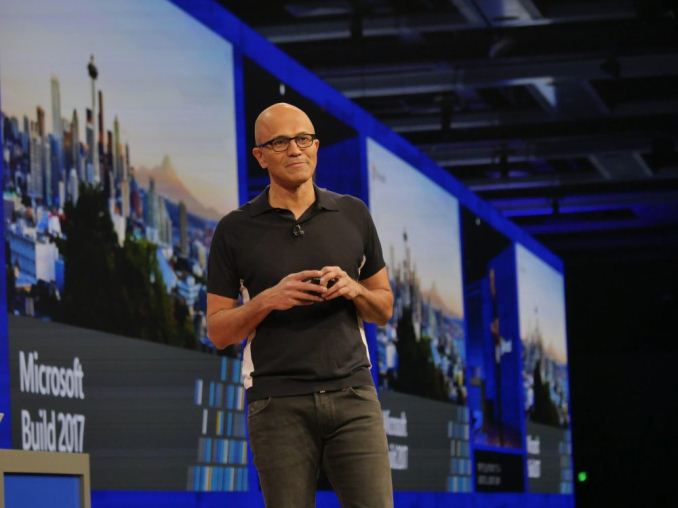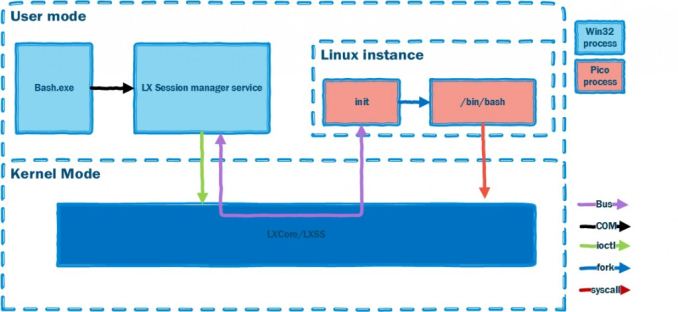The Microsoft Build 2017 Recap: What To Expect When You’re Expecting Windows
by Brett Howse on May 19, 2017 8:00 AM EST
Microsoft’s Build conference is one of their most important shows of the year, with a developer focused discussion that provides some guidance on the direction of Microsoft and its platforms. Over the last couple of years, the platforms have been some of the bigger talking points as well, with Microsoft diversifying across new technologies and markets to try and stay ahead of the curve. Microsoft has predominantly been a platform company over the years, and it’s a rare product they release that doesn’t end up as a platform of some kind. Over the years, the focus on some platforms has had to adjust in order to keep up with the times, and that’s not always an easy goal to accomplish when your original platform, Windows, has been so successful since its inception.
Microsoft had quite a bit of forward leaning news to announce at Build, which we will go over to shed some light on where the company is heading. The company has changed course with their mobile platform never gaining the traction they hoped, and although they have been very successful building out their cloud platforms, for many it’s the consumer facing products that are the most interesting.
Windows 10 Fall Creators Update
Possibly some of the biggest news about Windows actually got announced on April 20, when Microsoft committed to biannual updates for their operating system. This was a welcome announcement, and while some people would argue that it is still too often, when such a large portion of their install base is business, the almost random update interval that came with Windows 10 was unsustainable. IT needs a chance to schedule testing and deployment, and when you have randomly scheduled semi-major updates to the OS, that can be a burden. Having it set in stone for spring and fall should be a much more manageable process, especially since Windows Update for Business will allow them to defer if necessary.
The first big news was a name for the next update to Windows 10, which Microsoft is calling the Fall Creators Update. Perhaps that means the Creators Update should be prefixed with Spring, but the release date and announcement was not unexpected. After the Creators Update arrived with less major changes, and more smaller updates, perhaps there was an expectation that Windows 10 would move to more smaller updates, but the Fall Creators Update looks to be packed with new features.
With the Fall update, Microsoft is looking to refresh the experience again. They are introducing a new experience called Fluent Design, and it appears to be a solid overhaul of the design language for Windows.
Microsoft is also looking to branch out beyond their platform in new ways, with a big push for Cortana and the Microsoft Graph to enable portable experiences across platforms. It’s a smart play when you consider what happened with mobile, and all powered by the cloud.
The Windows Store got a lot of attention, and arguably it’s the part of Windows 10 that needs the most work, especially with the announcement of Windows 10 S where only Store apps will be able to be installed. The Desktop Bridge for Windows has some interesting new customers, and UWP got a lot more API support.
The big surprise at last year’s Build conference was arguable the introduction of the Windows Subsystem for Linux, and that got some more discussion at this conference as well. That, coupled with the new development tools, makes Windows a powerful development platform for much more than just Windows.
As always, it was a busy conference, with plenty of announcements. It’s always exciting to see where the different tech companies try to move the industry, and in what they prioritize in any given year, so let’s dig into the Build conference.













85 Comments
View All Comments
Alexvrb - Sunday, May 21, 2017 - link
Only issue I ran into with CU was on an HP laptop I was working with... Synaptics fingerprint reader stopped working. Since HP is terrible about releasing even semi-current drivers, I grabbed a "Lenovo" driver for the Synaptics reader, and it works great. No issues with audio or wifi on any tested device thankfully. Even on my desktop which has a SB Zx, Creative's latest drivers are shockingly still working.Audio issues seem to mostly be resolved via driver updates... the wifi issue some people are seeing on Intel controllers I hope will be solved by a driver update or OS patch in the near future as well.
jardows2 - Monday, May 22, 2017 - link
Disable WMM Power save support in your AP. That'll fix your problem.Gothmoth - Friday, May 19, 2017 - link
"Windows is not the dominant platform it once was"you mean on the desktop or overall?
i would like to know what OS should have threatened the windows dominance?
linux is still creeping around 2-4% on the desktop... OSX sure has not made a big jump.
so what has diminished the windows dominance on the desktop?
Gothmoth - Friday, May 19, 2017 - link
https://www.netmarketshare.com/operating-system-ma...that is pretty much the same as every marketshare analysis says.
nathanddrews - Friday, May 19, 2017 - link
That moment when Windows 8.1 has more share than Linux and MacOS combined...close - Friday, May 19, 2017 - link
Don't worry, things will change now that MS is planning to distribute Linux images in their store. Finally, the year of Linux might be upon us and it will be MS's doing :D.StevoLincolnite - Saturday, May 20, 2017 - link
That's the spirit! Never loose faith that Linux might have some market relevancy one day.close - Saturday, May 20, 2017 - link
Every next year is the year of Linux. You should know that by now :).mkozakewich - Tuesday, May 23, 2017 - link
Linux is useless for people who aren't familiar with the command line. Because of that, I expect it'll never become much more popular than it is now.close - Friday, May 19, 2017 - link
When you used to say "on desktop" it usually meant "on client devices" (basically desktop PCs and laptops). Today you're in the mobile age. Phones, tablets, even the device definition is blurred. Some phones and tablets are more or less fully fledged PCs right now). So it's hard not to consider the "overall" ecosystem now.